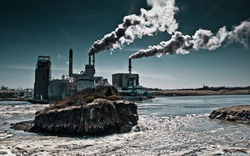Difference between revisions of "ISSS608 2017-18 T3 Assign Liu Yuanjing Conclusion"
Jump to navigation
Jump to search
Yjliu.2017 (talk | contribs) |
Yjliu.2017 (talk | contribs) |
||
| Line 25: | Line 25: | ||
<br/> | <br/> | ||
| − | <font size="5"><font color="#8B4513">'''Conclusion & | + | <font size="5"><font color="#8B4513">'''Conclusion & Recommendations'''</font></font> |
| − | <b>Top 3 | + | <b>Top 3 conclusion</b> |
| + | <br> | ||
| + | 1) Fig 5.1 right graph reveals the two adjacent detection points.We choose Kohsoom and Busarakhan as pair comparative analysis targets.From the map, the two sampling sites are closest to each other.Therefore, we can utilize these two position to determine the area environment and find pollution point.Two adjacent detection points have relative small distances but the chemical measure are different but in the same location, there are still some measures has similar motion tracks. | ||
| + | |||
| + | 2) the Macrozoobenthos could help us understand the location pollution and represent a inversely relationship with almost measures. | ||
| + | |||
| + | 3) | ||
| + | |||
| + | |||
| + | <br> | ||
| + | |||
| + | ==Recommendations== | ||
| + | |||
| + | <br> | ||
| + | 1) | ||
| + | 2) | ||
| + | 3) | ||
<br> | <br> | ||
Revision as of 19:31, 8 July 2018
Conclusion & Recommendations
Top 3 conclusion
1) Fig 5.1 right graph reveals the two adjacent detection points.We choose Kohsoom and Busarakhan as pair comparative analysis targets.From the map, the two sampling sites are closest to each other.Therefore, we can utilize these two position to determine the area environment and find pollution point.Two adjacent detection points have relative small distances but the chemical measure are different but in the same location, there are still some measures has similar motion tracks.
2) the Macrozoobenthos could help us understand the location pollution and represent a inversely relationship with almost measures.
3)
Recommendations
1)
2)
3)
